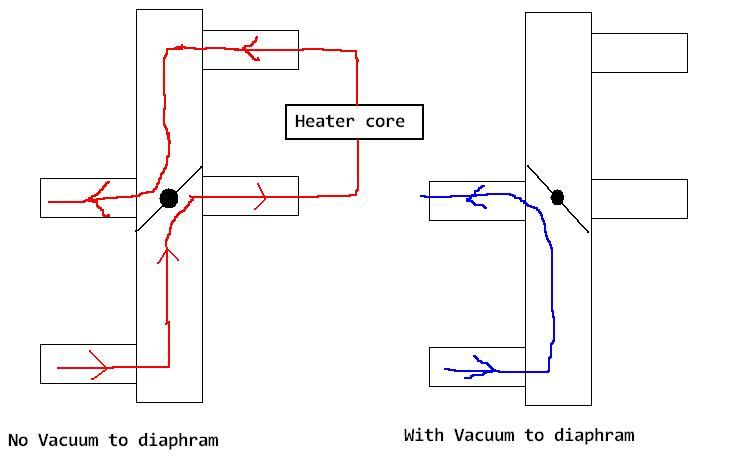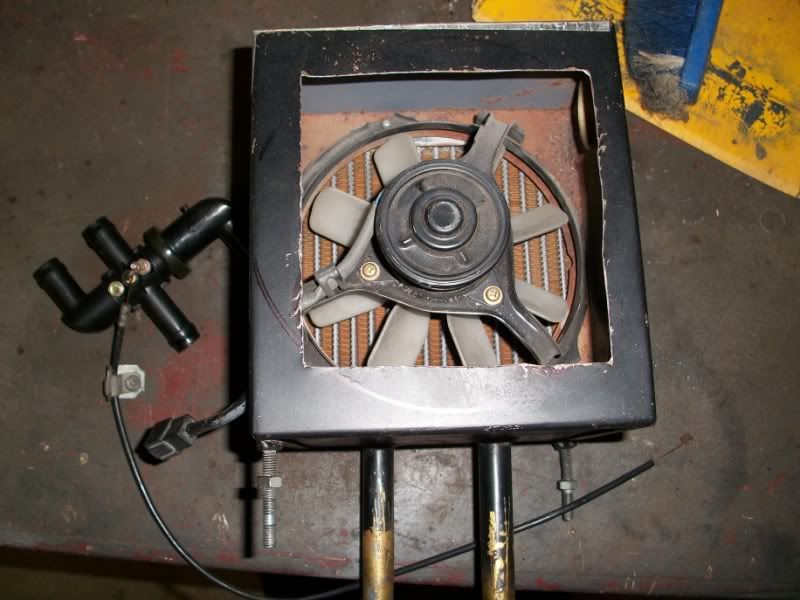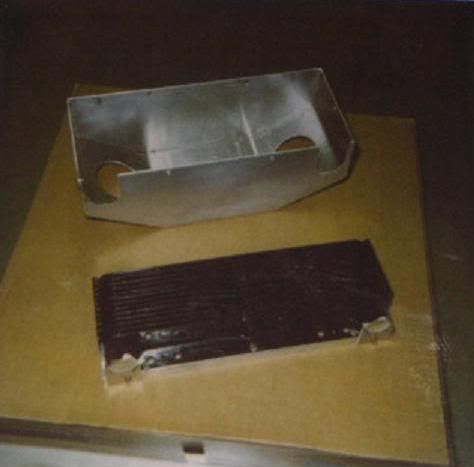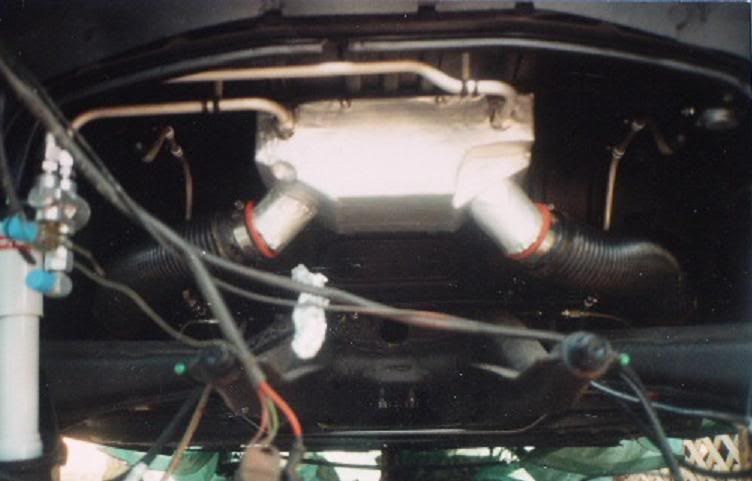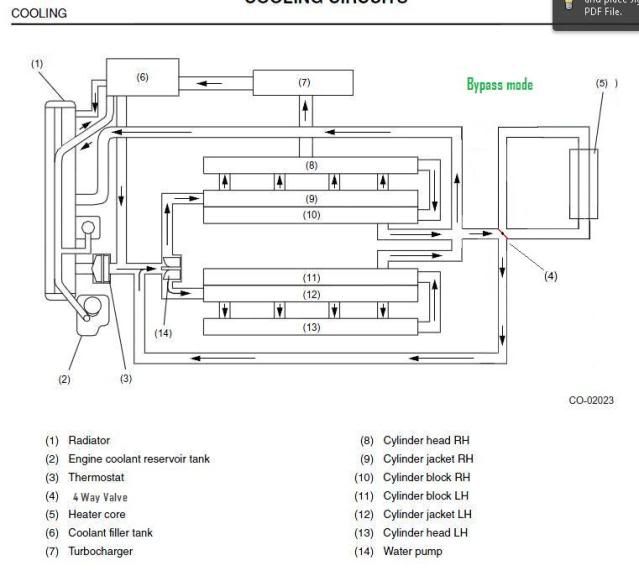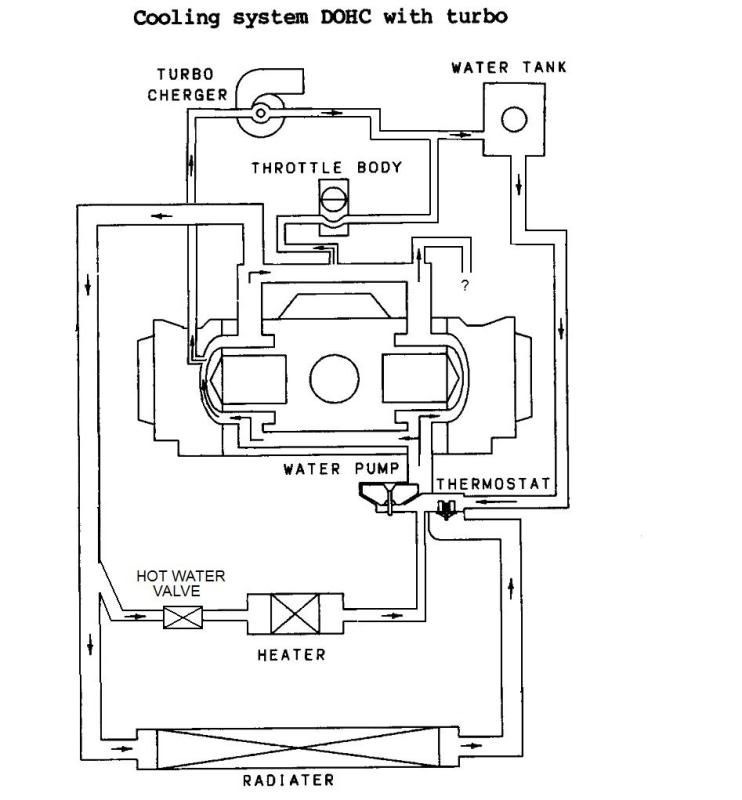Please feel free to add in other ideas and solutions for providing "water based" heat to the cabin.
To briefly recap, the Subaru conversions require continuous flow through the heater system plumbing (out the upper water manifold near the flywheel, back in between thermostat and water pump) in order to properly heat the thermostat so it will open and operate properly. However, continuously circulating heated coolant into the cockpit - especially in summer - not so hot! (or is that too hot??)
Enter the Ford Explorer 4-way coolant valve, suggested by 56SemaRag:
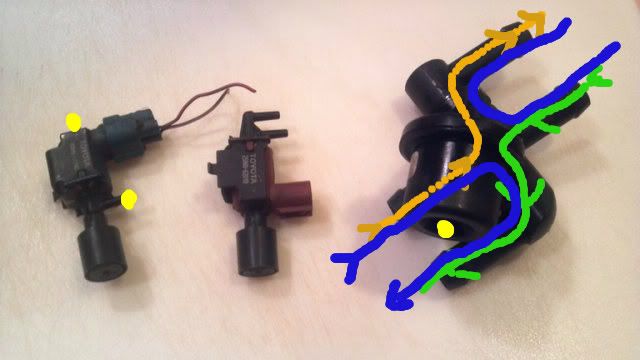
Located back by the engine it "should" provide the right combo of heated water when you need it in the cockpit, plus heated water when needed at the thermostat. Per 56SemaRag's description - it recirculates the hot water back into the engine when vacuum is applied, and sends water to the heater when vacuum is cut off. It seems like this may function better in our uses by reversing the logic? No vacuum, and it simply recirculates to the engine, apply vacuum and get heat? I wonder if some simple hose direction changes at the valve might accomplish this?
In some general researching, I noted Summit sells this valve, and it looks like they also have a cable controlled 4-way valve - for more of a manual control operation (but at twice the cost of the vacuum controlled valve). I suppose one could even adapt one of the Bug heater control levers to work this valve?
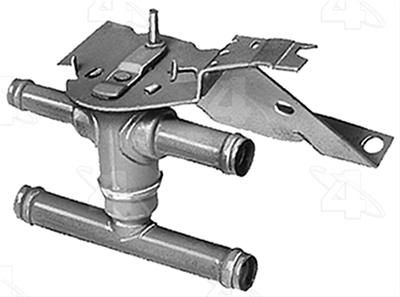
I had some concern that having the valve "all open" or "all closed" might provide too much heat without any regulation? In hindsight, I'm thinking this is likely not too much of a problem as you also have the circulation fan control: off and up to 3 on speeds to regulate how much heat you're getting. I also noted this looks to be SOP for the aftermarket heater system vendors like Vintage Air - their hot water valves work full on or full off.
Another possible option: Many conversions like mine use front mounted radiators. This means heated water is already available up near the dash from the lines going to and from the radiator. Why not use these? Tap into each side and fit an on/off single action water valve, with heater core up under the hood (or dash). This seems to make a lot of sense, if I'm not missing something obvious? Of course you'd still have to fit a "loop" hose for the heater fittings at the engine for the thermostat operation. I think this idea may need some more consideration for my build.
Now what about the heat exchanger?
Summit offers a nice compact unit, but it only offers unidirectional heat flow with 2 fixed outlet ports. If only looking for heat at your feet, this looks like a nice unit (PN 991102-1):
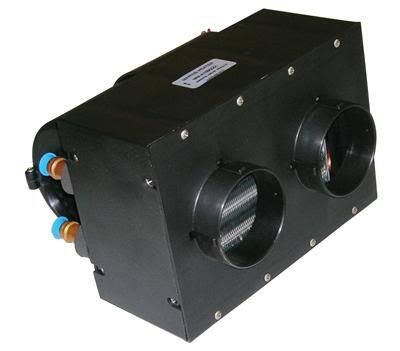
This looks to be good option vs. the old Mojave universal heater unit.
But what about defrost? I know the later model Bugs had a pretty nice system for controlling heat flow direction already built in. I guess to use it you could add one of these heater systems below the rear package tray (maybe taking in air from inside the cabin) and blowing down into the original built in heater ducting system. I know if I were doing this to a Bug, that's surely the direction I'd take. But in my case, I'm building a tube frame fiberglass body buggy - with NO heater system, ducting, or anything else. I've got to start from scratch and it needs to be pretty compact - and I like to apply the KISS principle as much as possible. I'm only questioning myself whether I'll need windshield demisting or not, and to incoporate that into the build. This surely won't be an all weather car, but I definitely want some heat for those cool spring and fall mornings and evenings. Maybe utilizing some form of cable operated duct dampers controlling heat to the floor with windshield "always on"?
Vintage Air has several heater systems available and a couple with integral windshield demist/defrost, but they are a little large to be cramming up under the dash of the typical glass body buggy. I'll have to search a bit more to see what else is out there.
Let's hear you ideas!

